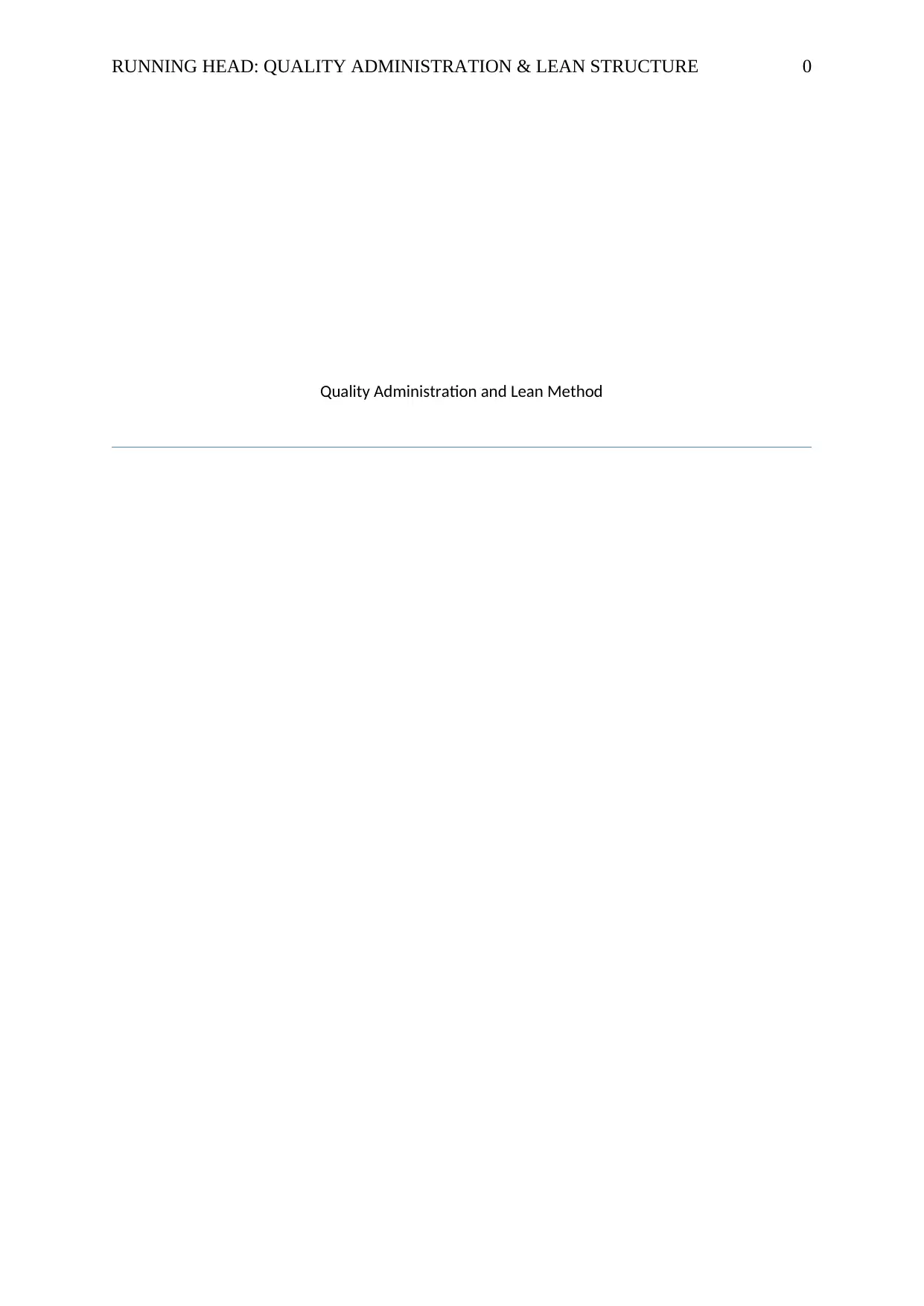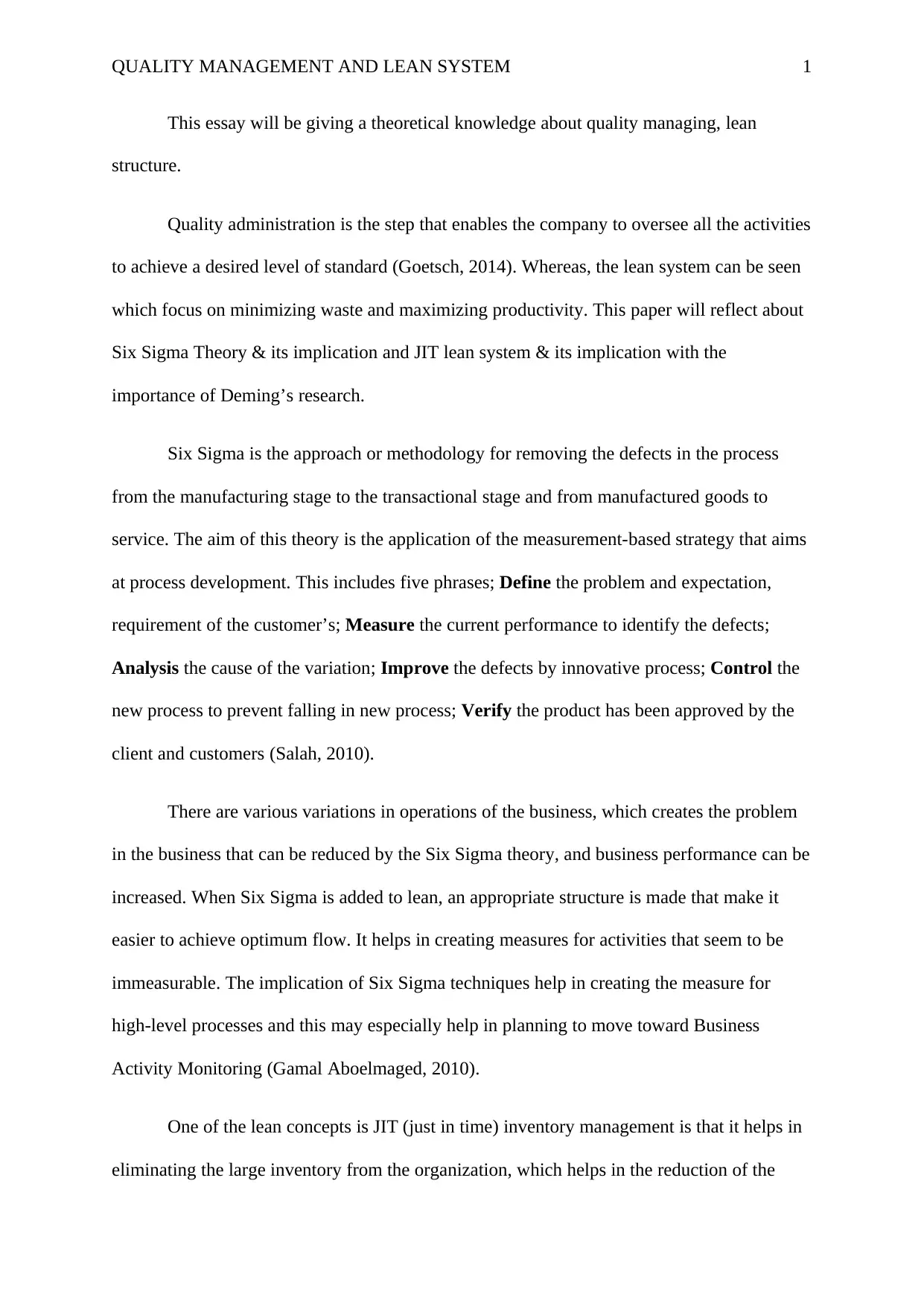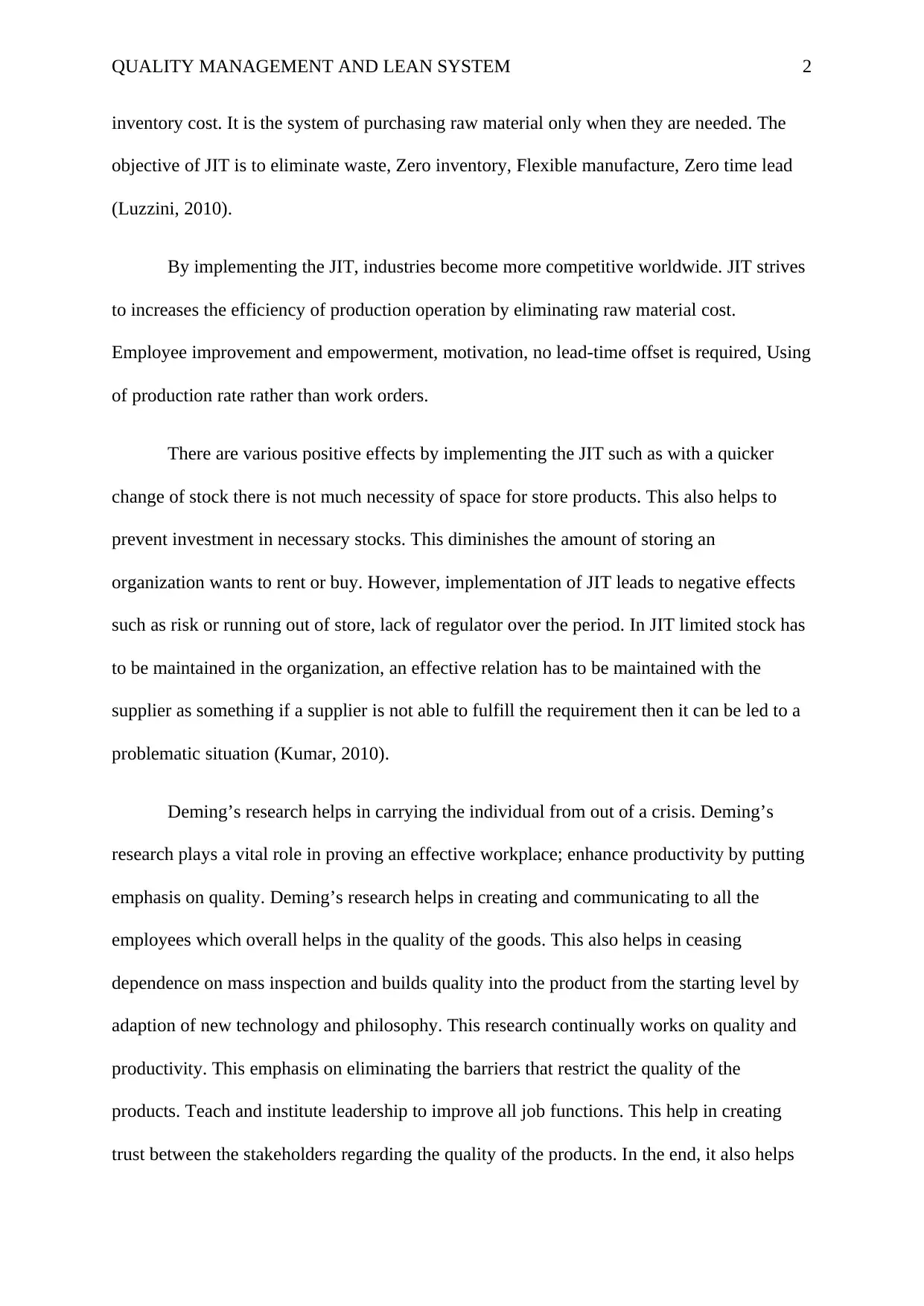College Essay: Quality Administration and Lean Systems (MT435)
VerifiedAdded on 2023/03/31
|5
|932
|430
Essay
AI Summary
This essay delves into the theoretical knowledge of quality management and lean systems, essential for business efficiency. It defines quality administration as the process of overseeing activities to achieve a desired standard and lean systems as those focused on minimizing waste and maximizing productivity. The paper explores Six Sigma theory, its five phases, and its implications for defect removal and process improvement. It also examines the Just-in-Time (JIT) lean system, its objective of eliminating waste and reducing inventory costs, along with its positive and negative effects. Furthermore, the essay discusses the importance of Deming's research in fostering an effective workplace and enhancing productivity through quality emphasis, as well as its role in creating trust and reducing total costs. The essay concludes by highlighting the benefits of implementing these concepts to enhance quality and profits within an organization.
1 out of 5








![[object Object]](/_next/static/media/star-bottom.7253800d.svg)